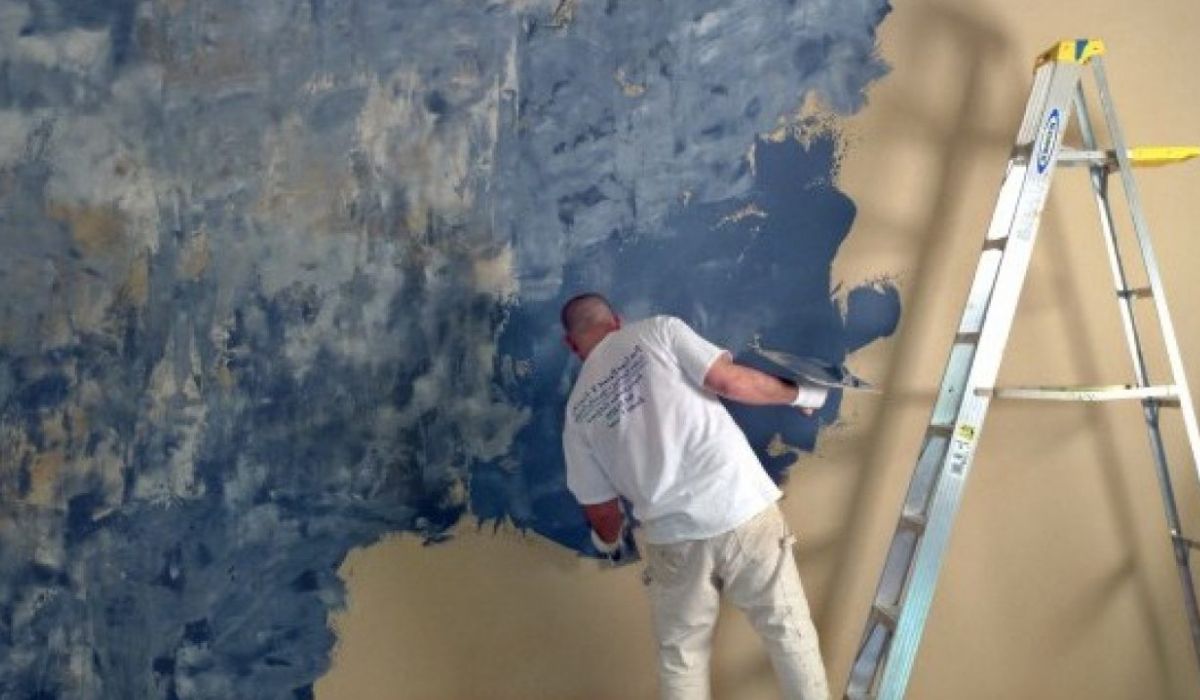Venetian plaster is one material that has endured through the years and continues to captivate interior designers, craftspeople, and homeowners. Originally from the venerable city of Venice in Italy, this age-old method has survived the test of time, imbuing contemporary interiors with an air of classic refinement. Our exploration of the history, application, and distinctive aesthetic that Venetian plaster brings to modern interiors will take us on a journey into the realm of artistic plasterwork.
A Journey through History
Original “stucco Veneziano” (Venetian plaster) dates all the way to the time of the Roman Empire. It wasn’t until the Renaissance in Venice that the technique really came into its own, as master craftsmen used it to make opulent finishes for churches and palaces. Polished to a marble-like smoothness, the procedure entails applying numerous coats of lime plaster. Along its long and illustrious history, Venetian plasters has become more than simply a building material; it has become an emblem of artistry and tradition.
The Art of Application
Craftspeople with extensive experience applying Venetian plaster are essential due to the complexity and amount of work involved in the procedure. As a result of combining slaked lime, marble dust, and other natural colors, the foundation is a multipurpose material that has a rich, textured look. Each layer of plaster is carefully troweled and burnished until the surface is smooth and glossy. As a consequence, the surface has the same lustre and depth as real marble, making a breathtaking impression.
Versatility in Design
Venetian plasters has been around for a long time because of how versatile it is. Classical, traditional, modern, and minimalist design styles are all within this material’s adaptability. Both business and residential spaces can benefit from Venetian plaster’s smooth and shiny surface, which elevates any area to an elegant level. A space may be transformed into an opulent haven with the help of Venetian plaster, whether it’s utilized as an understated accent or the main attraction.
A Palette of Possibilities
The endless color options offered by Venetian plasters let homeowners and designers personalize the finish to their heart’s content. By incorporating natural pigments into the plaster mixture, a wide range of colors can be achieved, from subtle neutrals to vibrant hues. Those looking for a really distinctive and individualized interior finish often choose Venetian plaster due to its ability to create a bespoke color palette.
Durability and Timelessness
Venetian plaster is quite long-lasting, which is a bonus in and of itself. Thanks to its lime-based composition, this finish will last for years without cracking or fading. When compared to more conventional wallpaper or paint, Venetian plasters has a far longer lifespan and requires less maintenance, making it a more eco-friendly and economical option for anyone seeking enduring style.
Enhancing Light and Space
Improving the quality of natural light and giving the impression of more space are two of the enchanted traits of Venetian plaster. Subtle light refracts off the plaster’s smooth, shiny surface, creating an ambiance that is both inviting and multi-dimensional. The versatility of Venetian plaster is best demonstrated by the fact that it can be strategically used to make even the most cramped of areas seem larger and more welcoming.
Conclusion
When it comes to interior design, trends come and go. However, Venetian plaster proves that timeless artistry is always in vogue. Elegant and multipurpose, Venetian plaster has a long and storied history that dates back to the Renaissance in Venice and finds contemporary uses in high-end residences and businesses. Not only can Venetian plaster improve interiors, but it also conveys a tale of tradition, expertise, and the eternal quest of beauty in design. This is because plaster is a material that goes beyond eras and adapts to varied architectural tastes.
Also Read: Elevate Your Space: Inspiring Accent Wall Ideas to Transform Your Home.
Frequently Asked Questions (FAQs)
What is Venetian plaster, and how is it different from regular plaster or paint?
The ornamental Venetian plasters is a combination of marble dust, slaked lime, and natural pigments applied to walls and ceilings. The distinctive application procedure involves troweling and burning many layers to obtain a polished, marble-like appearance, setting it apart from normal paint or plaster.
Where did Venetian plaster originate, and what is its historical significance?
A product of the Renaissance period, Venetian plaster has its roots in the Italian city of Venice. Craftspeople honed their skills to provide exquisite finishes for the inside of religious buildings and castles. Being a representation of the reliability, skill, and classic beauty of Venetian architecture gives it historical value.
What are the key benefits of choosing Venetian plaster for interior finishes?
Many advantages are offered by Venetian plasters, such as its enduring beauty, resistance to cracks and fading, and extraordinary endurance. Additionally, it is quite adaptable to many architectural styles and has a smooth, reflecting surface that improves natural light, creating the illusion of more open and welcoming environments.
How is Venetian plaster applied, and what is the typical process involved?
Using Venetian plaster requires a multi-stage process. The plaster mixture is troweled and burnished in tiny layers to attain a flawless surface. The procedure calls for expert artisans who pay close attention to detail. Polished with depth and light, the end product is stunning.
Can Venetian plaster be customized to match specific color preferences?
You may achieve a wide range of colors with Venetian plaster by simply adding natural pigments to the mix. Together, homeowners and designers can craft a unique color palette that reflects and enhances the intended aesthetic.











